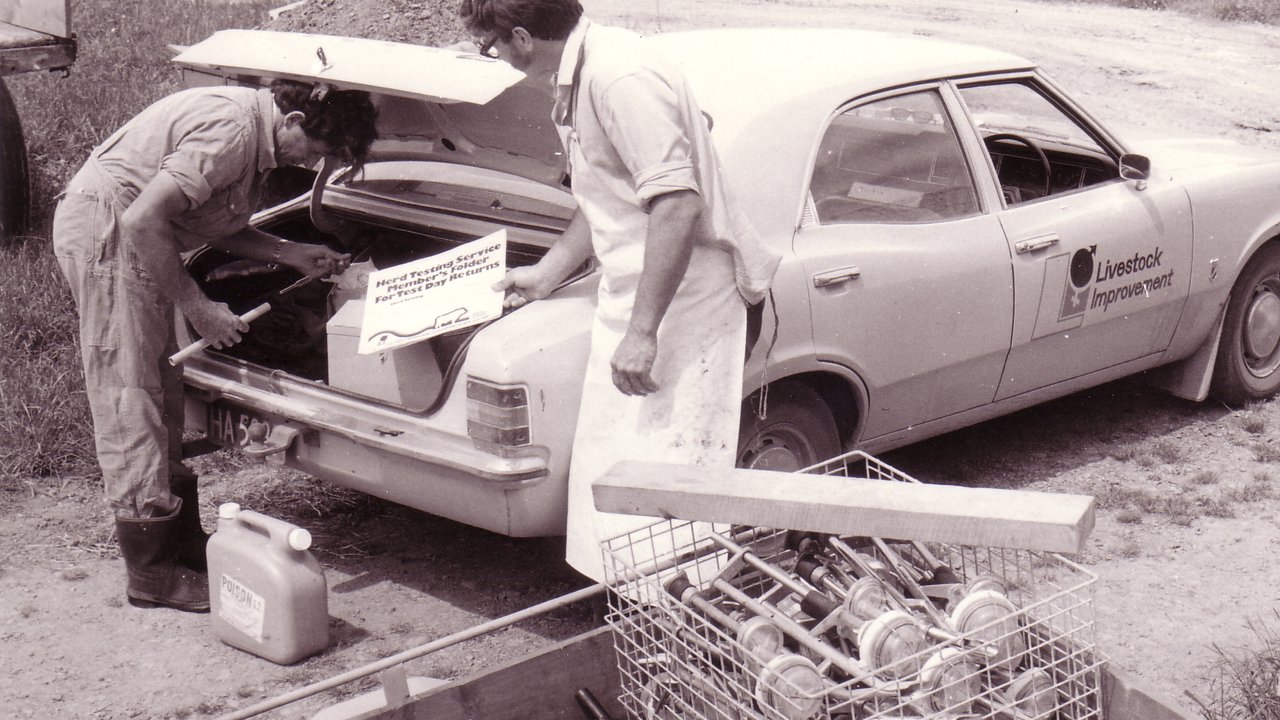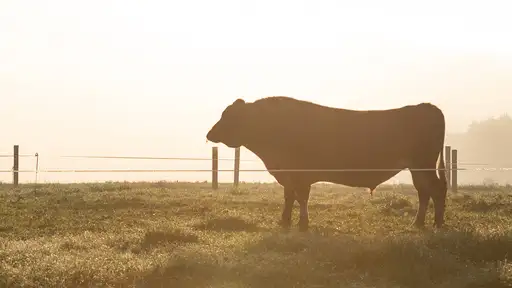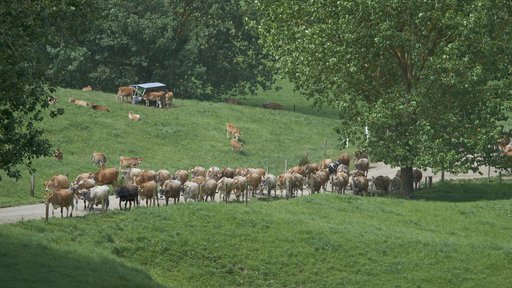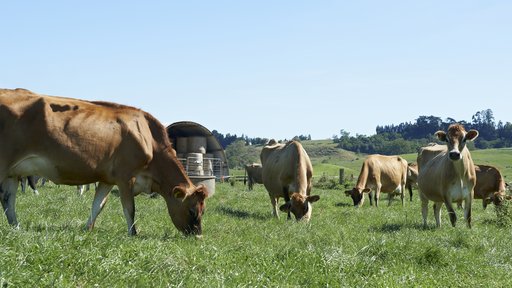Our roots in the New Zealand dairy industry run deep - all the way back to 1909 when cows were first tested for butterfat yield under as self-sample herd testing system. Group Herd Testing then had its origins in the Waikato during the 1920’s, with official testing officers making visits on-farm.
In the 1950’s we developed our artificial breeding (AB) program at Newstead in Hamilton, which gave farmers the ability to choose superior genetics for their dairy herd.
Next came our Sire Proving Scheme (SPS), introduced in 1961, which was a major milestone that improved the artificial breeding (AB) service we had already started.
The scheme gave farmers the opportunity to use nothing but unproven semen across their herds, with the goal of optimising genetic gain. To this day, the SPS is still one of the most important factors in providing genetic gains for our farmers, playing a key role in improving the national dairy herd.
With the national dairy herd growing, a new database was introduced in 1985. This platform, named MINDA, gave farmers the ability to verify ancestry and parentage for current and future herd members, while also keeping track of their matings and calvings. MINDA has evolved substantially over the years, providing more value to farmers with updated versions MINDA and MINDA App being launched in 2016 and 2015 respectively.
LIC as we know it today was officially formed in 1988 - as a wholly owned subsidiary of the NZ Dairy Board after the six LIC associations wound up. Most recently, a share simplification process was undertaken in 2018 in order to protect the co-operative principles that are fundamental to LIC.
These following milestones have shaped our co-operative since its inception.
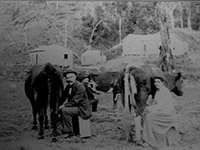
1909
Farmers organise the first routine herd testing service which is supervised by the Department of Agriculture.
1922
Waikato gets its first herd testing officers.
Calf marking commences.
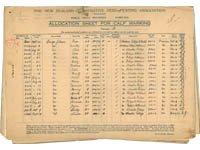
1927
The first official calf identification service is introduced.
1934
A Royal Commission study recommends a herd testing council be formed to control all herd testing.
Progeny testing/sire survey begins.
1935
The first artificial insemination trials begin on 44 Waikato herds.
1936
The Herd Recording Council (Herd Improvement Council) is formed, improving the standard of cattle in the dairy industry.
1937
Sire evaluations, based on progeny records, are carried out for the first time.
1939
28 Herd Testing Associations are amalgamated into six herd improvement associations.
1941
NZ Dairy Board publishes its first list of proven sires.
1947
The first production studies of stock are bred from artificial insemination.
1949
Commercial artificial insemination service begins in Waikato and Taranaki.
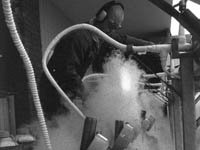
1950
The first artificial insemination bulls for proving are purchased.
1951
Deep freeze semen (now referred to as Alpha®) is processed for the first time.
NZ Dairy Board establishes a commercial artificial insemination centre in Newstead, Hamilton.
1954
Co-operative research on semen production and utilisation commences.
1959
Research on semen dilution begins at Newstead.
1961
LIC’s Sire Proving Scheme (SPS) is introduced, aiming to identify the best sires in the industry.
Newstead develops full use of semen diluents.
Artificial insemination reaches 500,000 cows across the industry.
1963
Caprogen becomes new semen diluent.
1964
Traits Other than Production (TOP) is introduced in sire proving herds.
Liquid semen is stored at ambient temperature for the first time.
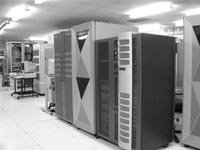
1967
IBM computer is installed to record all LIC associations' herd test records.
Milk meters are used for the first time in herd testing, replacing test buckets.
Herd test records become fully computerised.
1968
Artificial insemination reaches 1 million cows.
1969
Frozen semen is stored in liquid nitrogen for the first time.
1970
'Estimated genetic value' is introduced for all bull proofs.
1974
Sire survey ratings are replaced with Breeding Index (BI).
Contract mating begins in order to breed bulls for SPS.
1975
LIC associations introduce DIY artificial breeding.
Somatic cell counting service for individual cows is established.
1976
Self-sample herd testing service stats are introduced – samples are tested in six regional testing laboratories.
1979
Conformation indexes are introduced.
1980
Farm production division and the six LIC associations develop a national database.
Yellow notebooks are distributed to farmers around the country for the first time.
1985
The National Dairy Herd Database begins operating.
MINDA (Management Information for Dairy Animals) service is rolled out to farmers.
1988
National Traits Other than Production (TOP) are introduced.
Total Breeding Index (BI) calculated.
An LIC corporation is formed (in 1988) as a wholly owned subsidiary of the NZ Dairy Board.
The six LIC associations are wound up.
Protein testing is included in the herd testing service.
First Long-Last Liquid (LLL) semen used by LIC, a world first.
1991
Newstead campus produces its 50 millionth dose of bovine semen.
DairyMAN is launched, farm based PC software, built with Massey University.
1992
Two million cows are inseminated with LIC semen in one season.
Macdonald Committee reviews herd testing and related matters. It finds in favour of LIC being owned and operated by farmers and believes it should be responsible for optimising genetic gain, owning and operating the National Database, and that herd testing should remain a regulated activity.

1994
DNA parentage verification of all bulls belonging to the SPS begins.
1996
New animal evaluation introduced to improve selection accuracy and rate of genetic gain.
Breeding Worth (BW) introduced for sires and cows, superseding Breeding Index (BI).
For the first time genetic evaluations – Production Worth (PW), Lactation Worth (LW) and BW, are fully comparable for all breeds and crosses.
Enzootic Bovine Leucosis (EBL) control scheme is introduced, the first example of a disease traceability system using herd test milk samples and the Livestock Improvement National Database.
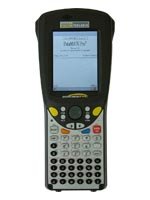
1997
Herd test samples are used in national disease control.
DataMATE, a handheld computer, is used to record inseminations for the first time.
1998
CowPAD, an electronic yellow notebook, is rolled out to farmers.
1999
Semen from a small team of unproven crossbred bulls is made available to New Zealand dairy farmers for the first time.
A breeding scheme begins for short gestation length (SGL) bulls.
The co-op becomes one of the first to use marker assisted selection for milk production traits to pre-select bulls for the SPS.
2000
KiwiCross (crossbred) semen is made available for the first time in New Zealand.
Progeny tested KiwiCross sires are brought into the SPS.
Survival breeding values are superseded by longevity breeding values.
Calving difficulty breeding values are published for all artificial breeding sires.
The national milk analysis centre analyses 10 million milk samples.
The first LIC representative is appointed in Australia.
Sales of semen from SGL bulls introduced.
2001
Three million inseminations are conducted in one season.
The SGL progeny test programme is launched.
A joint venture is established in Ireland to promote and sell New Zealand grass-based genetics.
Cow fertility breeding values are published for all artificial breeding sires.
National milk analysis centre uses robotics for the first time.
MINDAlink is released to farmers.
Dairy Industry Restructuring Act 2001 is passed into law, resulting in LIC becoming a user owned co-operative.
Dairy Industry (Herd Testing and New Zealand Dairy Core Database) Regulations 2001 comes into force.
DataMATE software includes control of inbreeding and single gene management.
Liquid KiwiCross semen used for progeny testing.
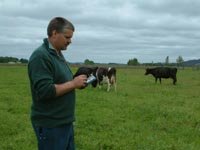
2002
Electronic herd management packages MINDApro and M-NOTE are released.
The license to commercialise first two BoviQuest production gene discoveries, Optimum and Quantum, is received.
A new Tru-Parent (parentage verification) DNA testing service is launched.
Testlink analysis network of laboratories looking at milk analysis, animal health and DNA is opened in Hillcrest, Hamilton.
New DataMATE software is used to optimise the rostering of Premier Sires’ bulls, reducing inbreeding alarms.
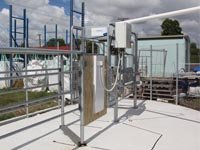
2003
Protrack Farm Automation Solutions is launched.
Leptosure animal health programme is introduced in conjunction with NZ Veterinary Association, promoting vaccination and preventing the spread of Leptosporosis.
Shareholders approve the new dual share structure.
Deer Improvement subsidiary commences.
2004
Investment shares are listed on the alternative market of the New Zealand Exchange (NZAX).
Customate electronic bull selection programme is launched.
Holstein-Friesian strain trial is completed, comparing 1970’s New Zealand Holstein-Friesian genetics with current day and US Holstein-Friesian genetics.
Deer Improvement completes first artificial breeding deer mating season.
Once-a-day milking breeding index is launched, ranking and breeding animals specifically suited to this type of milking.
The first KiwiCross bulls for Forward Pack Premier Sires team are named.
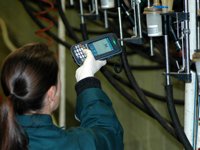
2005
EZ Link herd testing option is trialled, featuring barcoded flasks and a handheld barcode reader.
A team of SGL bulls is released to the market.
Once-a-Day progeny test programme is launched.
New Zealand’s EBL disease status achieves international standards of freedom, thanks to an eradication programme managed by LIC.
Animal Health laboratory becomes New Zealand’s first commercial lab to receive certification for disease testing animals destined for live export.
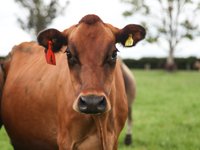
2006
GeneMark with Zee Tags, develops and releases tissue sampler – DNA Punch.
Innovative DNA-based test for Bovine Viral Diarrhoea (BVD) is developed.
2007
Australian engineering company Northern Feed Systems is purchased by LIC.
5000 dairy farmers are using MINDApro, a new milestone for the co-op.
More than 100,000 straws of semen are processed and dispatched in a single day, a new world record.
Mapping programme FarmKeeper is purchased by LIC.
Sexed semen technology trials begin.
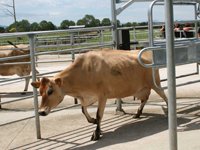
2008
‘Draft only’ Protrack farm automation option is released.
DNA Proven semen is launched.
The first KiwiCross bull, Scotts Northsea is inducted into LIC Hall of Fame, along with the first bull dam, Whinlea Kai Ebell.
Approval is received for a purpose-built collection facility to supply semen to the EU.
LIC National Council changes its name to LIC Shareholder Council.
Compulsion for co-operative control shareholders to hold investment shares is removed.
Voluntary Investment Scheme for shareholders is introduced, along with an Employee Share scheme for staff.
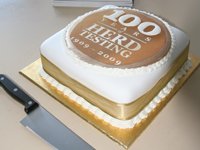
2009
The 100 year anniversary of herd testing is celebrated
The first DNA proven calf is born in New Zealand.
2010
EZ Link EID is launched.
Waikato dairy farm is purchased to be centre of innovation.
A limited release of EZ Heat is made available for rotary farm dairies.
Long Last Liquid (LLL) sexed semen technology is trialled in Waikato.
Reproductive Solutions Project is launched, helping improve reproductive performance for dairy farmers.
The billion-dollar SPS at Fieldays is celebrated.

2011
- MINDA Milk is launched, a web-based farm information product to provide electronic herd test results and analysis.
2012
- MINDA Land & Feed Basic is launched, a web-based pasture management tool.
- LIC becomes an accredited NAIT information provider.
- Launch Protrack Drafter farm automation system.
- In conjunction with DairyNZ, a change in the management of the dairy industry animal database is announced.
- MINDA Weights is launched, a new web-based tool to make monitoring young stock easier.
- The first polled Holstein Friesian, Poll Axe, joins bull team..
- Launch '6 week challenge’ is initiated, an industry collaboration to improve reproductive performance of dairy herds.
- Range of training modules for dairy farmer users of our products are created.
- Multi-million dollar investment in genomic research enables the discovery of a cause for small calves born in Holstein Friesian herds for several decades. All LIC bulls are screened for the genetic defect.
- A calving app for farmers to record calvings, as they happen is introduced.
2013
- The webshop is added to the LIC website, allowing farmers to order tags and other items online.
- A formal agreement is signed with DairyNZ, setting out the terms of the transfer of the core database from LIC and the licensing of LIC's Intellectual property to DairyNZ.
- MINDA Lookup app is rolled out, allowing farmers to access information in their MINDA records from their smartphone.
- One cause (Fertility 1) of loss of calves through pregnancy is discovered.
2014
- The assets and business of Waikato-based Dairy Automation Limited (DAL) are purchased by LIC.
- DNA parentage service achieves significant milestone of one million animals screened by the GeneMark laboratory.
- Genetic variations (AGPAT6) are discovered that impact milk composition in dairy cows.
- MINDA Pasture app is unveiled, allowing farmers to record pasture covers on their smartphone during their farm walk.
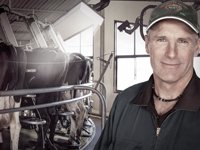
- Protrack EZ Heat is launched.
- Breakthrough in short gestation breeding programme as two healthy Hereford calves are born 30 days early, naturally.
- A strategic partnership with Figured is formed, a cloud-based farm accounting software firm and Xero partner.
- A cow genetic mutation is isolated. A variation in a Caribbean breed of cattle that provides tolerance to high temperatures is discovered, paving the way to breed cattle that maintain high milk production in tropical conditions.
2015
- LIC Automation is formed, with a merger of farm automation and milking sensor businesses Protrack and DAL.
- LIC enters into a partnership with Dutch company Lely Group, accelerating sensor technology developments and increase global use on farms.
- MINDA app is created, which consolidates the four previously launched apps – mating, lookup, calving and pasture.
- Genetic variations (Fertility 2, Fertility 3 and Fertility 4) are discovered that can impact a cow’s ability to carry a calf to full term. It is found in about 2% of Holstein-Friesian dairy cows and 1% of crossbreds.
2016
- 75% of the Australian-based Beacon Heat Detectors Pty Ltd is purchased by LIC, which manufactures heat patches.
- Collaboration agreement with DeLaval is announced, developing an automated Body Condition Scoring (BCS) measurement system.
- The web-based MINDA LIVE is unveiled at Fieldays.
- LIC teams up with First Light Wagyu to offer dairy farmers the opportunity for an additional source of income from sought-after, value-added Wagyu beef.
2017
- LIC collaborates with Fonterra to develop an online technology solution, called Agrigate, which allows farmers to view their operation in one place.
- LIC’s deer improvement subsidiary business is sold.
- A joint breeding programme between LIC and Jersey NZ is announced, called Jersey Future.
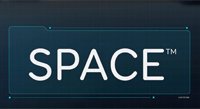
- Launch of innovative satellite technology for pasture management - SPACE™.
2018
- Share simplification process brings existing two classes of shares together into one single class.
- Strategy refresh is launched, outlining the co-operative’s focus on the core NZ dairy industry.
- Co-op introduces world-leading measures to combat Mycoplasma bovis cattle disease, including daily testing of bull semen.
- Somatic cell is added to cow Production Worth (PW) in order to better reflect the industry’s focus on efficient, high quality milk production.
- A new team of elite A2 bulls is unveiled, supported by genotype testing.
- A national health and safety standard for AB facilities is launched with checks occurring around the country.
- Business transformation is adopted, aiming to protect the fundamentals of the co-op while making sufficient profits for reinvestment.
2019
- Manawatu semen processing centre is upgraded, enhancing LIC’s export capabilities and providing the ability for the facility to serve as a back up to Hamilton centre if required.
- An enhanced genomic evaluation model is implemented for sire selection.
2020
- Methane research project starts, seeking to identify a possible link between the methane cows produce and their genetics.
- HoofPrint® is introduced, a new tool to help dairy farmers keep step with increasing demands to reduce their environmental footprint.
- LIC Ag-Celerator™ launches, an early-stage investment fund for innovations with the potential to positively impact the dairy sector.
- San Ray FM Beamer becomes the fourth LIC bull to reach the landmark achievement of selling one million semen straws in New Zealand and overseas.
- LIC begins a two-year MINDA Improvement Roadmap detailing technology changes intended to keep improving our MINDA experience for farmers.
2021
- The refined strategy is launched, with value for LIC’s farmer shareholders at the heart of it.
- LIC Automation is divested to MSD Animal Health.
- The Methane research trial, looking to identify more climate friendly cows, is officially launched alongside Agriculture Minister Hon Damien O’Connor.
- Agrigate, a software which connects farmers’ data between multiple platforms, is purchased by LIC.
- The first Sustainability Report is released, which details LIC’s environmental, social and economic performance for the year.
- The new sexed semen lab is opened and produces a record 200,000 fresh sexed semen straws.
- The first ever special dividend is announced to shareholders.
- LIC releases a new development in MINDA which enables data captured from cow wearable devices to join the rest of the animal’s records in MINDA.
- Wayne McNee steps down from Chief Executive after 8.5 years and David Chin, formerly LIC’s GM Operations & Service, is appointed to the role.
